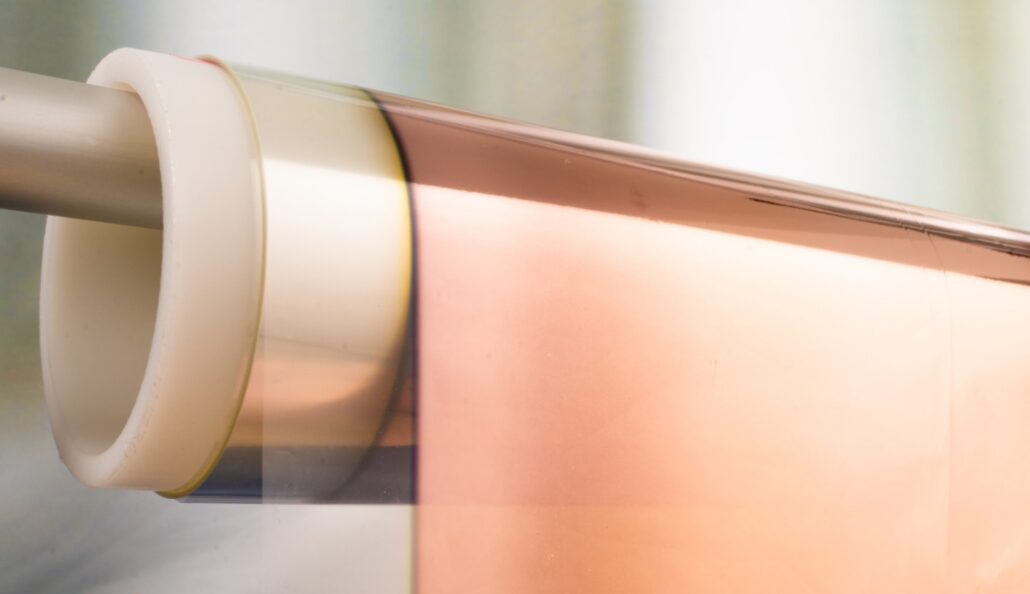The Fraunhofer Institute for Electron Beam and Plasma Technology (FEP) in Dresden, Germany, has developed a roll-to-roll process that coats both sides of polymer films with copper or aluminum. This approach is intended to replace metal foils as current conductors in lithium-ion batteries. According to the institute, metal-polymer current collectors using this method can achieve electrical conductivity and layer thickness comparable to that of conventional metal foils. This could lay the groundwork for lighter and safer battery cells in the future.
Success in the PolySafe project
As part of the PolySafe project, which is funded by the German Federal Ministry of Research, Technology and Space, the Fraunhofer institute deposited copper and aluminum layers up to one micrometer thick on twelve-micrometer-thick PET foils. The coating was applied to both sides without significant wrinkling on rolls up to 60 centimeters wide. Technical University of Braunschweig then processed the finished metal-polymer films into pouch cells and tested them for charging and discharging behavior. In these tests, the new current collectors demonstrated comparable performance and cycle stability to conventional reference cells.
Higher energy density
According to Fraunhofer FEP, this technology could reduce the weight of current collectors and increase battery energy density. In the event of a short circuit, the polymer carrier is designed to melt, interrupting the flow of current and preventing thermal runaway.
Source:
https://www.fep.fraunhofer.de/en/press_media/05-2025.html



